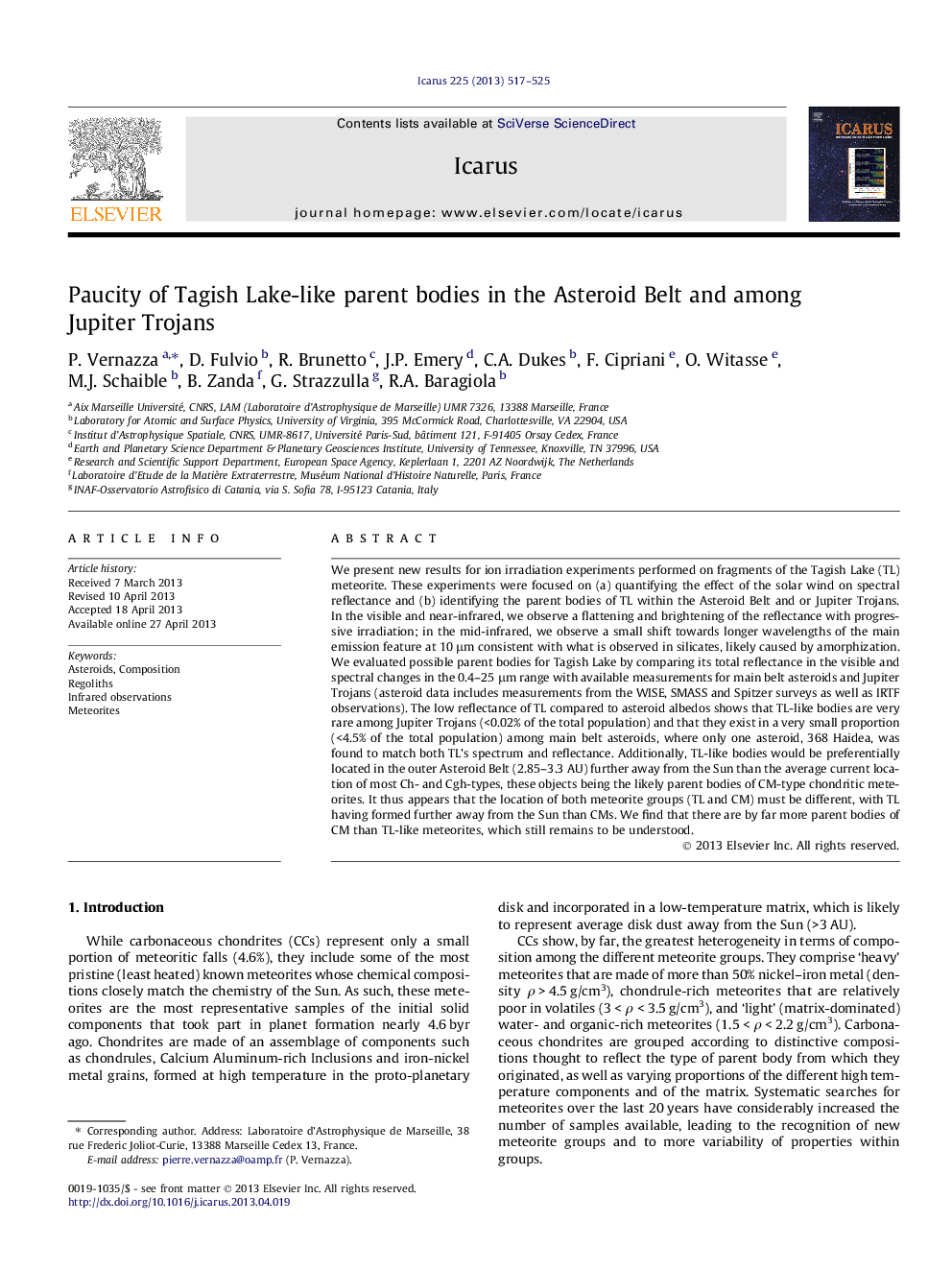| Article ID | Journal | Published Year | Pages | File Type |
|---|---|---|---|---|
| 1773223 | Icarus | 2013 | 9 Pages |
•The Tagish Lake meteorite gets brighter and bluer with progressive irradiation..•Its parent bodies are absent among Jupiter Trojans and rare among main belt asteroids..•Those would be preferentially located further away from the Sun than most Ch- and Cgh types.•There are by far more parent bodies of CM than TL-like meteorites, which still remains to be understood.
We present new results for ion irradiation experiments performed on fragments of the Tagish Lake (TL) meteorite. These experiments were focused on (a) quantifying the effect of the solar wind on spectral reflectance and (b) identifying the parent bodies of TL within the Asteroid Belt and or Jupiter Trojans. In the visible and near-infrared, we observe a flattening and brightening of the reflectance with progressive irradiation; in the mid-infrared, we observe a small shift towards longer wavelengths of the main emission feature at 10 μm consistent with what is observed in silicates, likely caused by amorphization. We evaluated possible parent bodies for Tagish Lake by comparing its total reflectance in the visible and spectral changes in the 0.4–25 μm range with available measurements for main belt asteroids and Jupiter Trojans (asteroid data includes measurements from the WISE, SMASS and Spitzer surveys as well as IRTF observations). The low reflectance of TL compared to asteroid albedos shows that TL-like bodies are very rare among Jupiter Trojans (<0.02% of the total population) and that they exist in a very small proportion (<4.5% of the total population) among main belt asteroids, where only one asteroid, 368 Haidea, was found to match both TL’s spectrum and reflectance. Additionally, TL-like bodies would be preferentially located in the outer Asteroid Belt (2.85–3.3 AU) further away from the Sun than the average current location of most Ch- and Cgh-types, these objects being the likely parent bodies of CM-type chondritic meteorites. It thus appears that the location of both meteorite groups (TL and CM) must be different, with TL having formed further away from the Sun than CMs. We find that there are by far more parent bodies of CM than TL-like meteorites, which still remains to be understood.
